South Iran Nubo-Sindian Desert and Semi-Desert
The ecoregion’s land area is provided in units of 1,000 hectares. The conservation target is the Global Safety Net (GSN1) area for the given ecoregion. The protection level indicates the percentage of the GSN goal that is currently protected on a scale of 0-10. N/A means data is not available at this time.
Bioregion: Persian Deserts & Mountain Woodlands (PA29)
Realm: Central Eurasia
Ecoregion Size (1000 ha):
35,223
Ecoregion ID:
841
Conservation Target:
9%
Protection Level:
9
States: Iran, Pakistan, Iraq
A vast, arid landscape of shrubs and sand sweeps across the Northern coastal plain of the Persian Gulf. Sweltering inland deserts are juxtaposed by a coastline verdant with mangrove forests, where leaves glisten with salt. An ecological melting pot, species from Westward and Eastward distributions intermingle with those typical of the Middle East: African wildcat, Indian grey mongoose, jungle cat, and striped hyena coexist here. Chinkara are incredibly well suited to these dry desertscapes; these remarkable gazelle are able to travel for several days drinking only the dew condensed on shaded leaves.
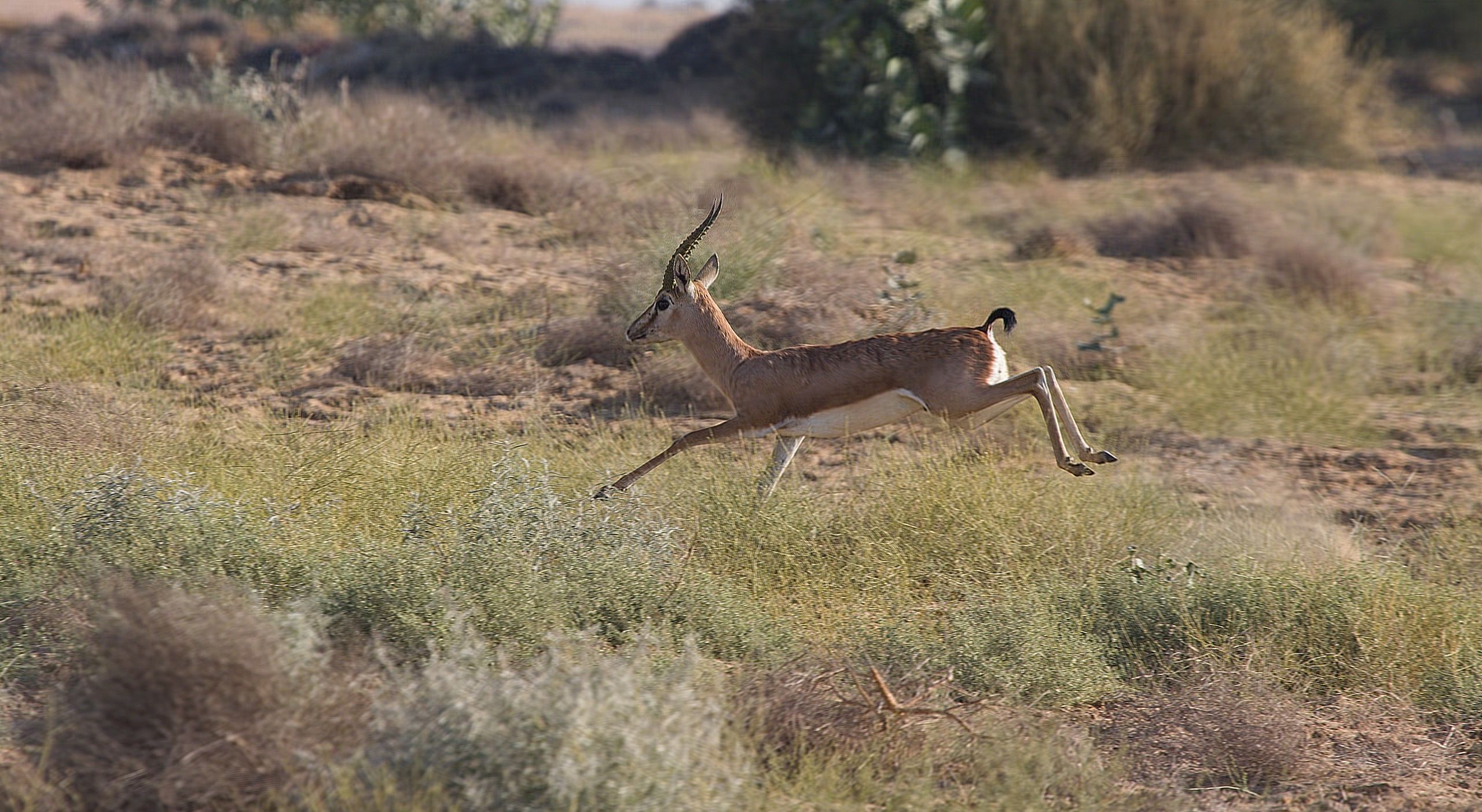
The flagship species of the South Iran Nubo-Sindian Desert and Semi-Desert ecoregion is the chinkara. Image credit: Creative Commons
This ecoregion stretches across the Southern swathe of Iran, reaching into small areas of Iraq and Pakistan. A sub-equatorial climate produces extremely hot and dry summers, and mild winters. Shrubland is dominated by the spurge Euphorbia larica, Christ’s thorn jujube, and Acacieta flavae iranica, whilst Euphrates poplar grows along riversides. Littoral saltland vegetation grows in pockets, typified by Salicornietea europaeae, Halocnemetea strobilacei, and Suadetea deserta.
Lush forests of grey mangrove and loop-root mangrove flourish in restricted zones along the coastline. Further inland, the Jaz Murian depression extends in a broad oval across Southeast Iran. This sandy basin is intermittently brought to life by a seasonal lake at its center, which is fed by two main rivers: the Bampur from the East, and the Halil Rud from the West.
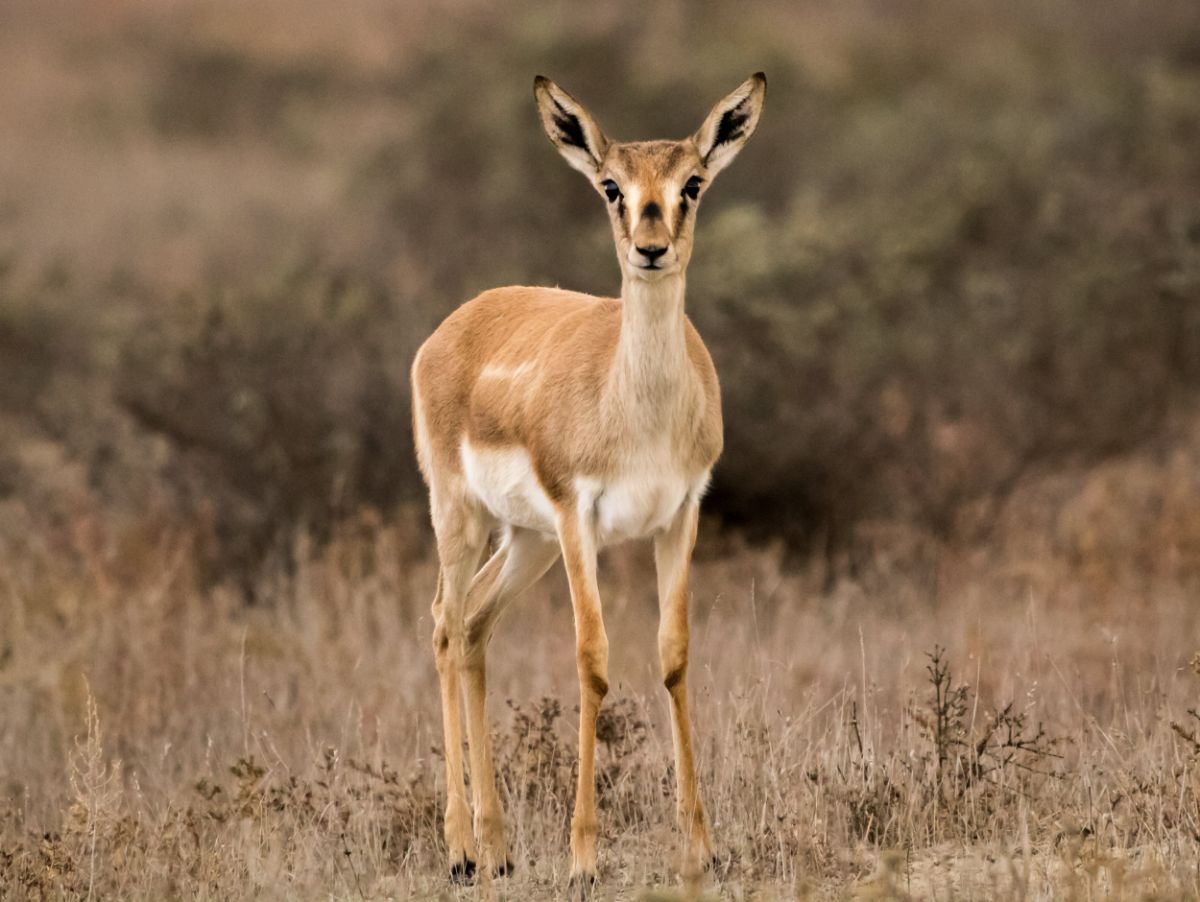
Female goitered gazelle. Image credit: Elsad Ibrahimov, Creative Commons
Endemic animals include the Persian krait, Iranian shrew, Iranian worm snake, and Kiabi’s bent-toed gecko, whilst zebra snake and Persian trident bat represent near-endemic species. Breeding birds include crowned sandgrouse, bar-tailed lark, and pale rock martin, and winters welcome significant populations of Houbara bustard and black stork. Swift, agile, and shy of humans, elegant chinkara have sandy fur and straight, ringed horns. With their ability to survive on astonishingly low levels of water, these gazelle are truly at home in this region’s arid deserts and shrublands.
Traditional livelihoods include agriculture, and pastoralism of camels and goats. Agriculture in this region can only be carried out using irrigation due to scarce rainfall[. The Khūzestān Plain in the Northwest is known for cultivation of date palms, citrus fruits, barley, and sugarcane, whilst Southern Iranian provinces produce pistachios, wheat, dates, limes, and the best oranges in the country.
Mangrove forests provide a natural defence against flooding and soil erosion along the coast, and also yield many important products for humans: honey, medicinal substances, forage for livestock, and wood for construction, firewood, and charcoal production.iv Oil fields and dams are also common along the shore. Major protected areas include Hingol National Park and Buzi Makola Wildlife Sanctuary in Pakistan, and Hormod and Hara Protected Areas in Iran.
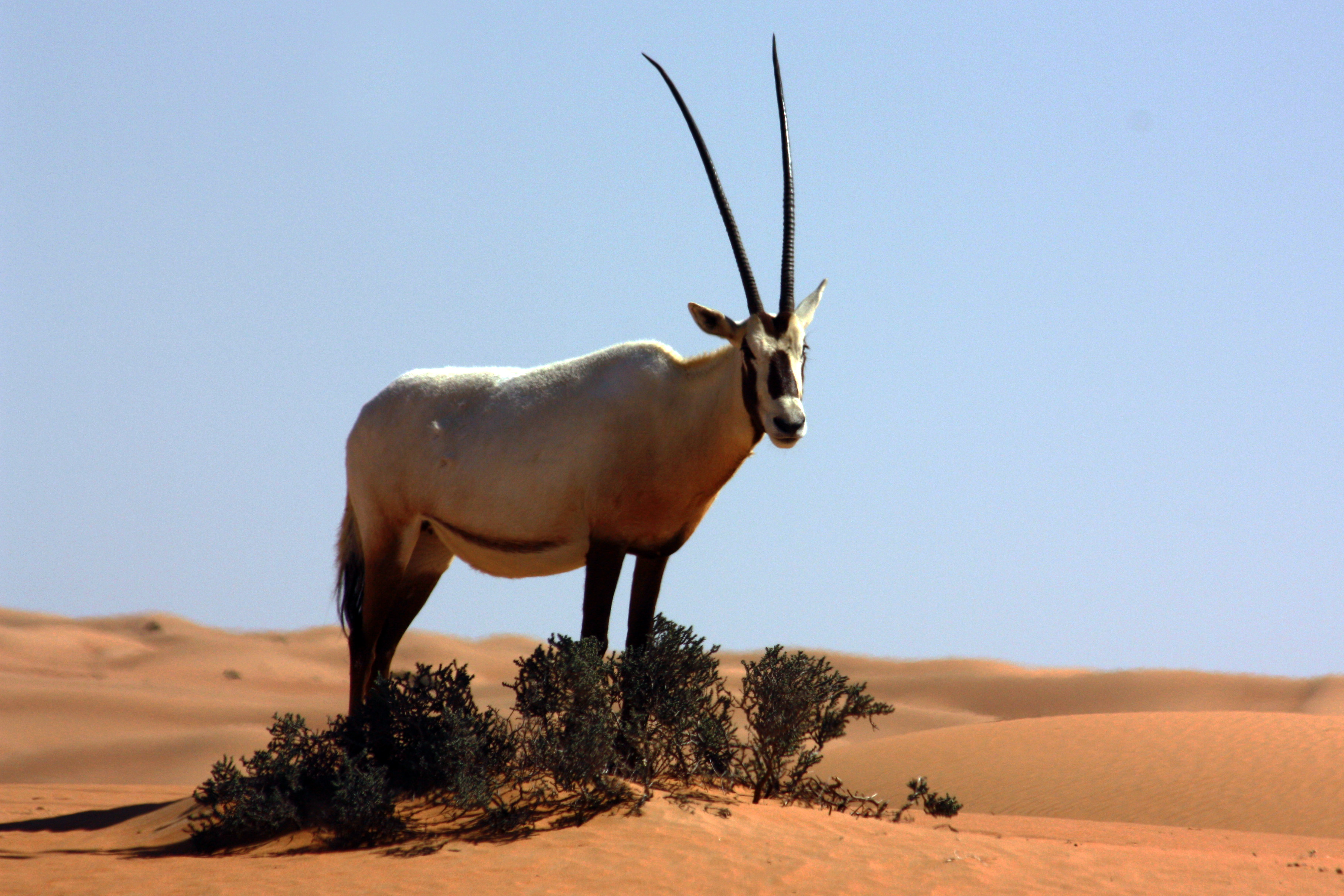
Arabian oryx. Image credit: Charles J Sharp, Creative Commons
Pollution from agricultural and oil industries is the chief threat in this landscape. Petroleum hydrocarbons are prevalent across mangroves, which are further pressured from overexploitation of branches and leaves for livestock forage, and from loss of seawater connections due to road construction.
Chinkara are threatened by overhunting in both Iran and Pakistan, exacerbated by habitat loss; it is hoped that captive breeding programs may help population number to recover. Pakistan is launching a pilot project for the restoration of degraded mangrove ecosystems, and Iran is strengthening regional institutions to combat pollution.
The priority conservation actions for the next decade will be to: 1) ensure precious mangrove ecosystems are protected with adequate legal enforcement; 2) fund ecological research of the desert and semi-desert communities and their threats; and 3) formulate evidence-based management plans specific to the needs to this region’s ecosystems.
Citations
1. Yusefi, G.H., Faizolahi, K., Darvish, J., Safi, K. and Brito, J.C., 2019. The species diversity, distribution, and conservation status of the terrestrial mammals of Iran. Journal of Mammalogy, 100(1), pp.55-71.
2. Zahed, M.A., Rouhani, F., Mohajeri, S., Bateni, F. and Mohajeri, L., 2010. An overview of Iranian mangrove ecosystems, northern part of the Persian Gulf and Oman Sea. Acta Ecologica Sinica, 30(4), pp.240-244.
3. Miller, C.S., Leroy, S.A., Collins, P.E. and Lahijani, H.A., 2016. Late Holocene vegetation and ocean variability in the Gulf of Oman. Quaternary Science Reviews, 143, pp.120-132.
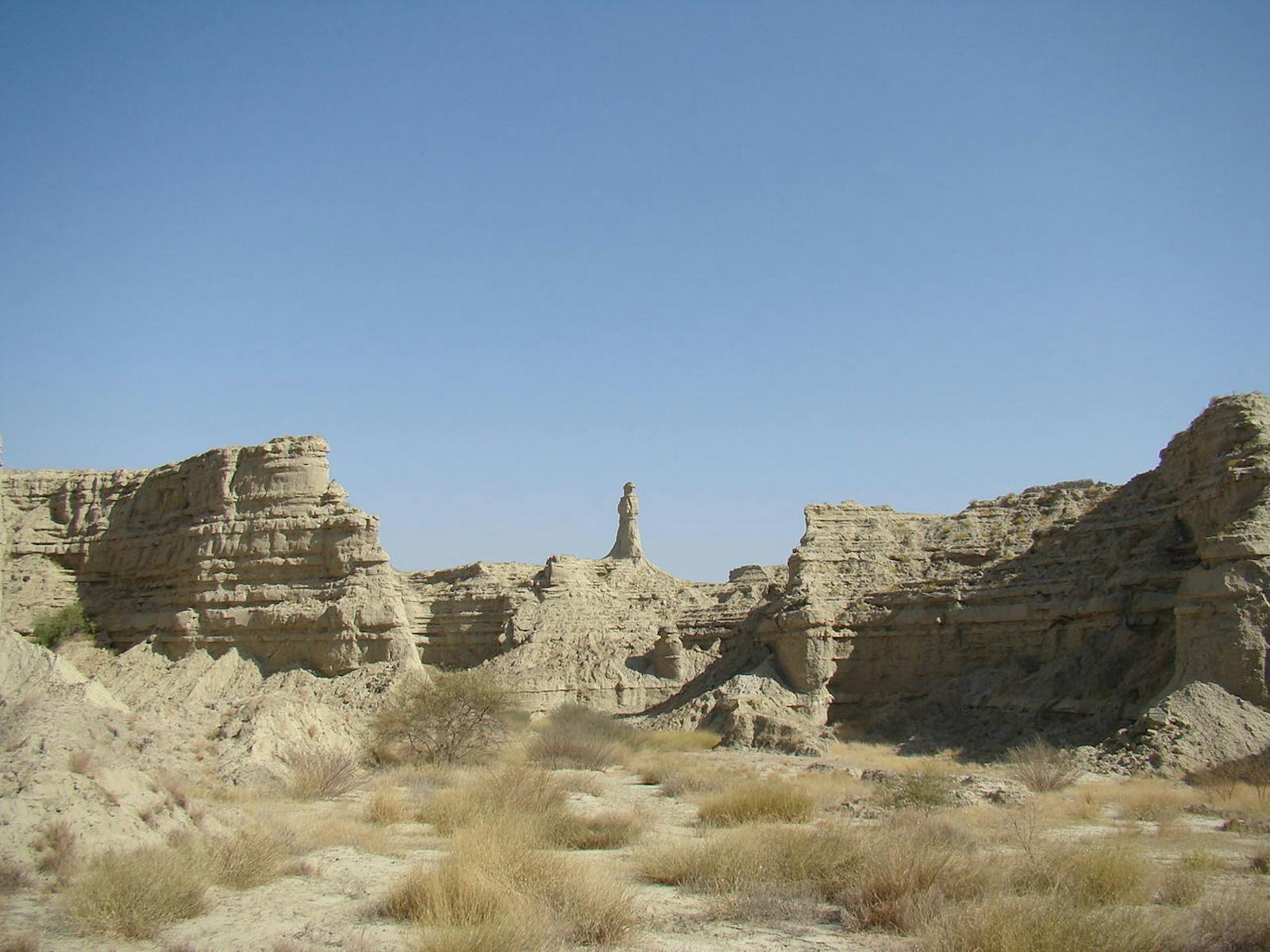
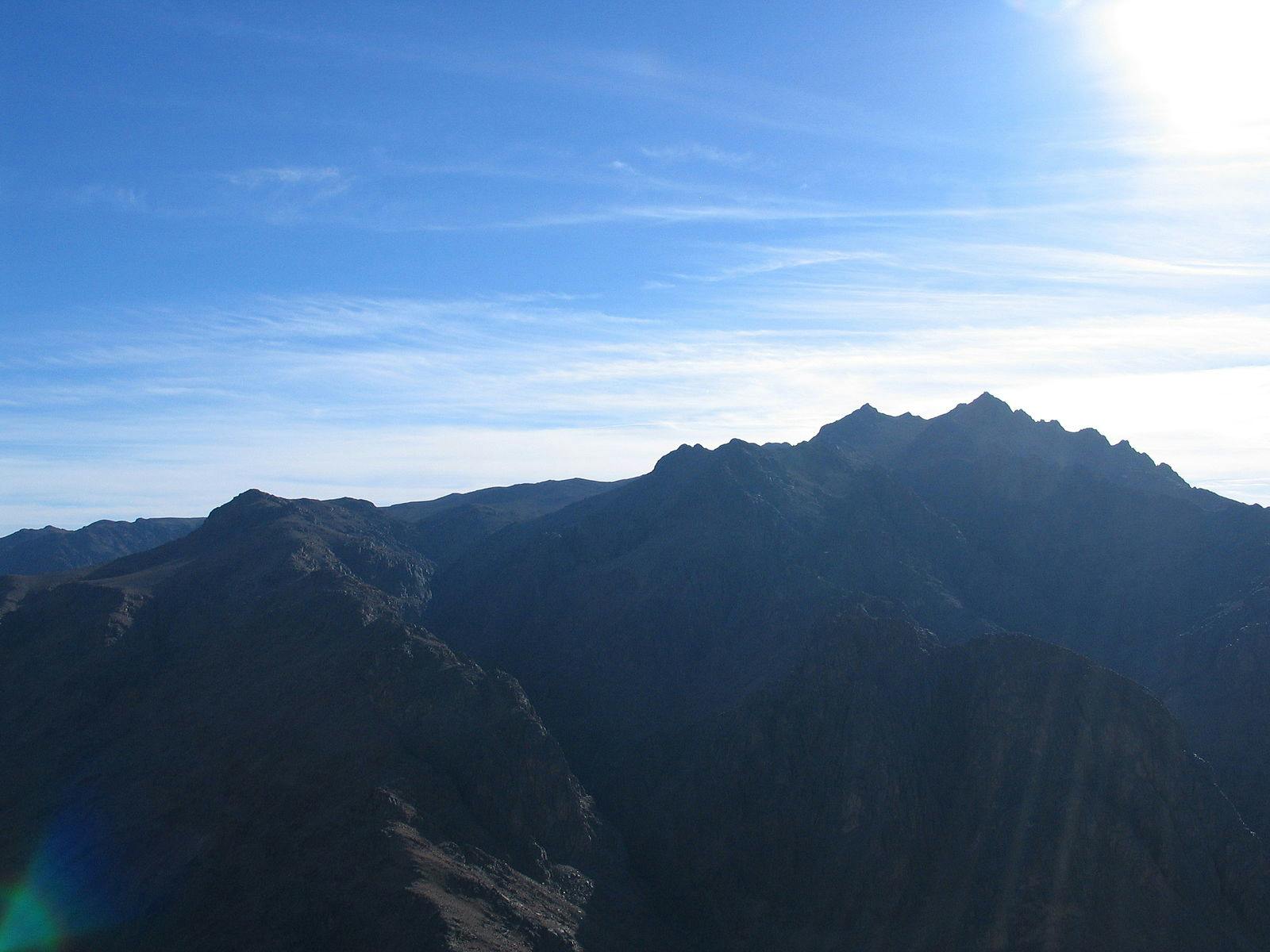
.png?auto=compress%2Cformat&w=300)

